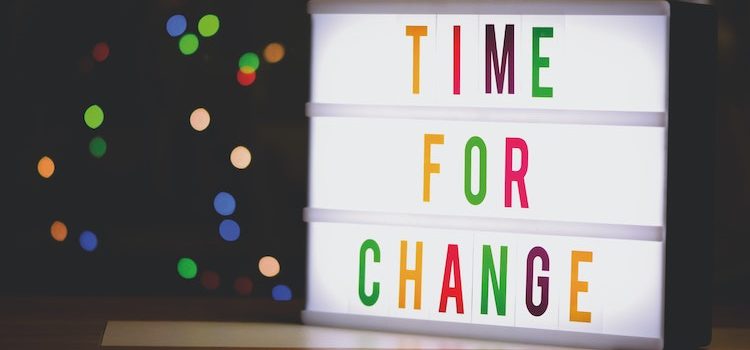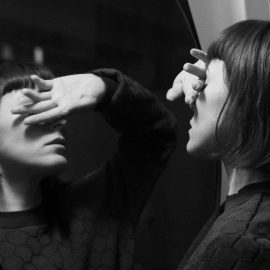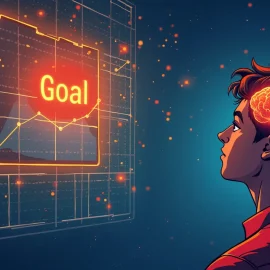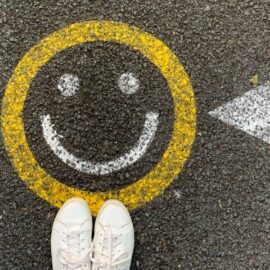

This article gives you a glimpse of what you can learn with Shortform. Shortform has the world’s best guides to 1000+ nonfiction books, plus other resources to help you accelerate your learning.
Want to learn faster and get smarter? Sign up for a free trial here .
What routines do you have that don’t serve your goals? What harmful behaviors would you like to stop doing?
Everyone has bad habits. One of the best ways to tackle them is to engage in serious self-exploration. We’ve put together several questions about bad habits that will help you identify and understand your habits, identify replacement behaviors, and then implement those replacements.
Continue reading for five exercises that will propel you toward a healthier, happier life.
Breaking Bad Habits
We’ve put together five exercises based on concepts in the following books:
- Essentialism by Greg McKeown
- Girl, Stop Apologizing by Rachel Hollis
- The Coaching Habit by Michael Bungay Stanier
- The Success Principles by Jack Canfield
- What Got You Here Won’t Get You There by Marshall Goldsmith
Let’s dive into several questions about bad habits that you can go through on your own or in a group.
Exercise 1: Identify Your Bad Habits
One of the best ways to identify your bad habits is to figure out what’s holding you back from the life you want to live.
- What are your goals? Be as specific as possible.
- What behaviors do you have that are keeping you from achieving your goals?
- How would you describe each of these behaviors? It’s key to be specific about what your behavior is, so use the clearest terms possible. For example, instead of saying “social media,” you would say “I lose time scrolling through Instagram.”
Exercise 2: Understand Your Bad Habits
The authors of Essentialism and Girl, Stop Apologizing explain why it’s difficult to change a bad habit. The behavior is reinforced by a powerful mental loop consisting of a cue, an action, and a reward. The cue is what triggers the habit (e.g., stress, the sight of a wine bottle, a notification on your phone). The action is the habit itself. The reward is what you get when you practice this habit that makes it a temptation and keeps you coming back to it (e.g., stress relief, better sleep, entertainment).
Answer the following questions about bad habits that you identified and described in the previous exercise.
- What’s the trigger (cue) that usually sets this bad habit off? Five common triggers are location, time, emotional state, other people, and immediately preceding action. To figure this out, describe in full the most recent time you engaged in this bad habit. Consider factors such as who you were with, what time of day it was, and how you were feeling at the time.
- What’s the reward that reinforces this bad habit? What makes it tempting?
- Describe why this bad habit is a potentially harmful behavior. How is it making your life worse? How is it keeping your life from being better? Consider how the most recent instance of engaging in your bad habit might have affected those around you. Did your behavior upset anyone or harm your relationships with your coworkers? Did you experience backlash for your actions?
- Describe how your life would change if you broke this bad habit.
Exercise 3: Identify Bad Habit Replacements
The cue-action-reward mental loop makes it hard to change a bad habit. But, you can use its power for good. The authors of Essentialism and Girl, Stop Apologizing explain how to change your habits by taking advantage of the loop. Here’s the basic principle: You point your cues at new actions, and you find new actions that provide the same rewards.
The questions about bad habits in this exercise are about cues and rewards. Take the list of cues and list of rewards you have from the previous exercise. Take each cue and each reward one at a time, asking the following questions.
- What new, positive action can this cue prompt? For instance, you see a donut shop on your way to work. That used to be a cue for you to go in and buy a donut. Now, use the sight of the donut shop to prompt you to go to the deli across the street and buy something healthful.
- What new, positive action can provide you with the same reward? For example, you want to relax in the evening. You used to drink a glass of wine to relax. Now, get that same relaxation by cuddling up on the sofa with your spouse and laughing together while watching a sitcom.
- How can you close each new loop you create? Make sure each loop has all three parts: cue, action, and reward.
Now you should be set up with an action plan. When you’re ready to tackle each bad habit, you have a process to follow.
Exercise 4: Identify Neutral Behaviors as a Stepping Stone
Sometimes, the idea of switching straight from a “bad” habit to a “good” one can seem too difficult to achieve. In What Got You Here Won’t Get You There, Marshall Goldsmith recommends identifying a neutral behavior to practice if you feel overwhelmed. The following questions about bad habits will help you figure out which approach is better for you.
- Consider one of your bad habits. What are the two behavioral extremes of this habit—the bad behavior you’re engaging in and its “good” alternative?
- How confident do you feel about the idea of transitioning from this bad behavior to its positive alternative? Do you feel it’s a change you could achieve with ease, or are you overwhelmed at the prospect of making such a big behavioral transition?
- What’s a “neutral” behavior you could practice as you transition to your ideal behavior? (A neutral behavior is one that’s neither harmful nor actively positive. Even if you already feel confident that you can switch to your ideal behavior immediately, it’s good to have a neutral behavior as a backup if things get tough.)
- Now that you’ve identified a neutral behavior, do you feel more confident in your ability to change your behavior and cut out your bad habit for good? Why or why not?
Exercise 5: Replace Your Bad Habits (One at a Time)
In one or two good self-reflection sessions, you should be able to describe and understand your bad habits and identify replacement habits (positive or neutral). But, to actually turn your plans into reality will take time. So, it’s wise to prioritize them. You can do this in a couple of different ways. You can put them in order, from “most harmful” to “least harmful” based on your best judgment. Then, you can tackle the worst habits first. However, if your worst habit is the hardest to replace, you might get discouraged. So, it’s a good idea to start with an easy one. That will help you practice the process and get encouraged to tackle another bad habit on your list.
- What’s the most harmful habit on your list?
- What bad habit on your list would be the easiest to replace?
- What bad habit will you tackle first?
- What are that habit’s cue and reward?
- At least for now, will you replace it with a positive habit or a neutral one?
- What does the new cue-action-reward for this habit look like?
- When will you start this new loop?
- What’s your goal? For example, you can aim to be consistent with your new habit in 21 days.
- What’s your plan for accountability? Will you ask a friend to hold you accountable?
By now, you’re well on your way to making positive changes in your life. We hope these questions about bad habits have provided you with both encouragement and a plan.

Want to fast-track your learning? With Shortform, you’ll gain insights you won't find anywhere else .
Here's what you’ll get when you sign up for Shortform :
- Complicated ideas explained in simple and concise ways
- Smart analysis that connects what you’re reading to other key concepts
- Writing with zero fluff because we know how important your time is






